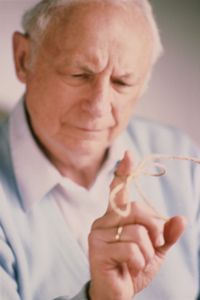What would you save if there was a chance your house might be destroyed? Whether it's a fire that starts in the middle of the night or a hurricane headed right for your hometown, what one thing would you grab as you ran out the door? Many of us would head straight for the family photo albums or to an item with sentimental value, such as grandpa's old six-string or a child's baby blanket. While electronics, clothing and other belongings could eventually be replaced, we know that some souvenirs are special. Our tendency to pick items such as these is an acknowledgment that the experiences in our past in large part determine who we are. We are committed to preserving the physical evidence of our memory.
But it's not so simple when your brain faces destruction or natural disaster. You can't just grab your favorite memories before it shuts down, because different kinds of memories are stored in different parts of the brain. Your episodic memory, or your depository of recent events and new information, is located in the temporal lobe and the prefrontal cortex. The storage space for general knowledge and facts, or semantic memory, is in the temporal lobe and the cortex. Procedural memory, or skills that have become secondhand, like typing or walking, is kept in the cerebellum. Lastly, working memory, which includes the phone number you need to make a call or your ability to recall how to drive to your child's school, is kept in the prefrontal cortex.
Advertisement
Now imagine that a disorder heads for your brain in the same way that a fire heads for a house. First, it might take your episodic memory, making it difficult to remember what you did yesterday, though you can recall perfectly what you did 50 years ago. It's challenging to keep track of the time or remember the names of all the grandchildren. It's harder to find just the right word when speaking, and this makes you irritable and embarrassed. You may snap at people who try to help you, but eventually you withdraw from everyone. You lose the ability to speak altogether, and after a few years, your brain is totally destroyed, so that you can't even take care of basic needs such as swallowing. Unlike when a fire threatens a home, there's not much you can do to save the parts of the brain you care about.
That's the process of dementia, a collection of symptoms caused by brain disorders. To learn more about these disorders and how they affect the brain, go to the next page.
Advertisement






